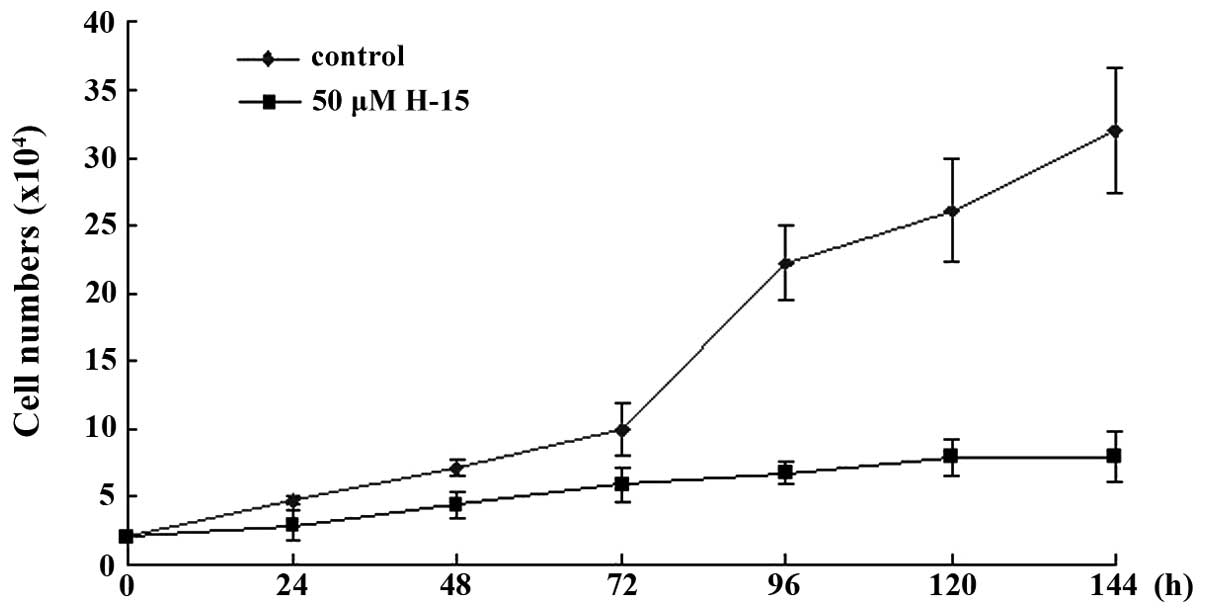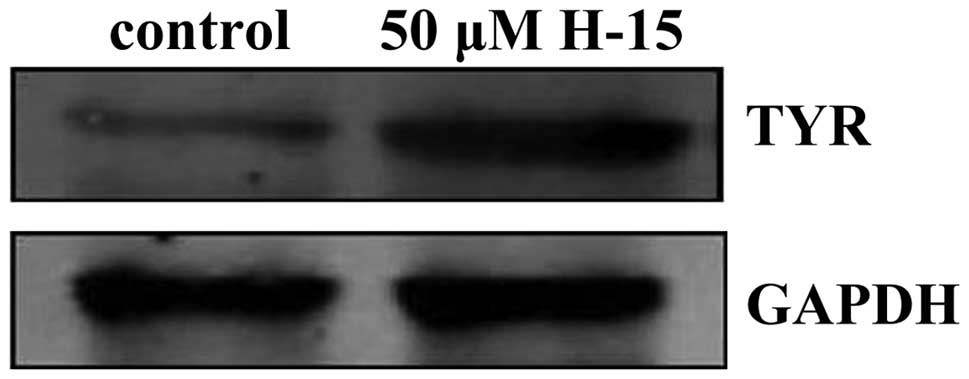Novel cyclic pentapeptide H-15 induces differentiation and inhibits proliferation in murine melanoma B16 cells
- Authors:
- Published online on: December 10, 2015 https://doi.org/10.3892/ol.2015.4025
- Pages: 1251-1255
Metrics:
Total
Views: 0 (Spandidos Publications: | PMC Statistics:
)
Total PDF Downloads: 0 (Spandidos Publications: | PMC Statistics:
)
Abstract
Sansalvamide A is a cyclic depsipeptide that is isolated from a marine fungus of the Fusarium genus. Sansalvamide A exhibits significant antitumor ability. The molecular formula and molecular weight of the novel sansalvamide A derivative H‑15 are C29H44BrN5O6 and 637.2475, respectively. In the present study, H‑15 was found to inhibit the proliferation and induce the differentiation of murine melanoma B16 cells. A sulforhodamine B colorimetric assay was used to measure the inhibitory effects of 0.1, 1, 10, 50 and 100 µM H‑15 on the B16 cells, and the results revealed that the inhibitory effects of H‑15 exerted on the B16 cells occurred in a concentration‑dependent manner. In addition, the growth curve model of the B16 cells treated with 50 µM H‑15 revealed that the effect of H‑15 was also time‑dependent. The differentiation morphology of the B16 cells was observed subsequent to treating the cells with H‑15. An optical microscope was used to observe the differentiation morphology of the cells. In addition, melanin secretion increased in the B16 cells treated with 50 µM H‑15. The expression levels of tyrosinase (TYR) were assayed by western blot analysis, and it was found that the cells treated with 50 µM H‑15 for 48 h exhibited increased expression of TYR. The results of the present study indicated that H-15 may induce the differentiation of B16 cells.















